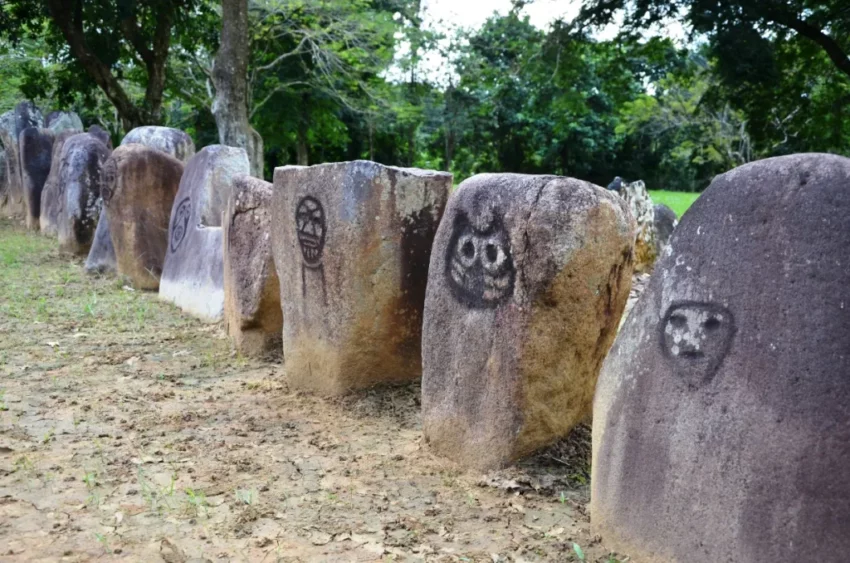The Caguana Ceremonial Ball Courts Site, located in the central highlands of Puerto Rico, is a significant archaeological site. It showcases the pre-Columbian history of the Caribbean. The site contains several stone-lined ball courts, petroglyphs, and plazas. It offers a glimpse into the lives and rituals of the Taíno people, the indigenous inhabitants of the region. The Taíno culture was vibrant and complex, with Caguana being a focal point for ceremonial activities and community gatherings.
Get your dose of History via Email
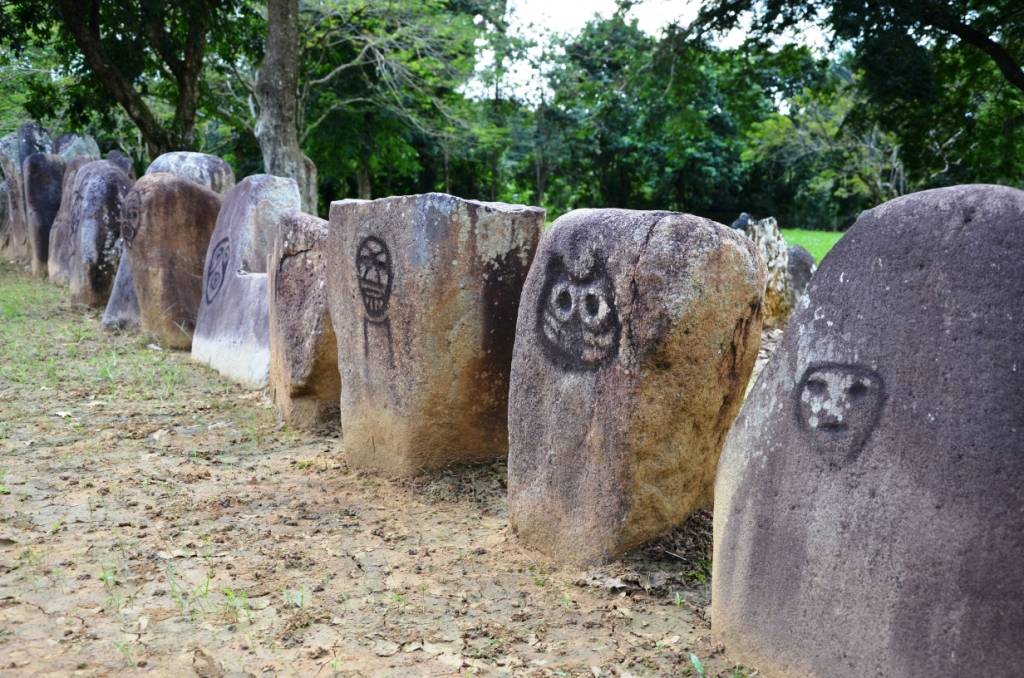
Historical Background of Caguana Ceremonial Ball Courts Site
The Caguana Ceremonial Ball Courts Site dates back to approximately 1270 AD. It was a central hub for the Taíno people. The site was discovered in the early 20th century by a local farmer. Later, it was brought to the attention of archaeologists. Excavations began in the 1930s under the guidance of Dr. Ricardo Alegría, a prominent Puerto Rican archaeologist. The Taíno people, who built this site, were skilled farmers, fishers, and artisans. They inhabited the site for several centuries before the arrival of the Spanish.
Over time, the site became a ceremonial center. It was used for playing the ball game known as “batey.” The game held religious and social significance for the Taíno. Caguana also served as a gathering place for festivities and rituals. It was a space where the community reinforced social bonds and cultural identity. The site’s importance continued until the late 15th century. Then, the Taíno population faced the devastating impacts of European colonization.
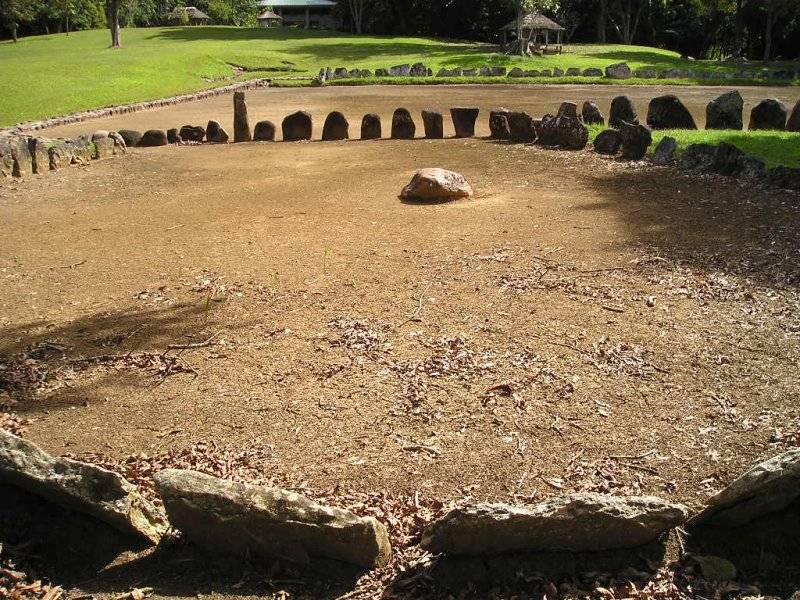
Although the Taíno culture underwent dramatic changes post-contact, Caguana remained a symbol of their heritage. The site was not continuously inhabited after the Spanish conquest. However, it has been the scene of historical importance. It represents the resilience and cultural achievements of the Taíno people. The site’s preservation allows for ongoing research and education about this indigenous culture.
Archaeological studies at Caguana have provided valuable insights into Taíno society. They have revealed the complexity of their religious beliefs and social structures. The site’s ball courts are among the most well-preserved and extensive in the Caribbean. This suggests that Caguana was a significant ceremonial center with regional influence. The presence of petroglyphs and monoliths also indicates the spiritual significance of the site.
Today, the Caguana Ceremonial Ball Courts Site is a protected area. It is managed by the Puerto Rico Conservation Trust. It serves as a cultural heritage site where visitors can learn about the Taíno legacy. The site’s discovery and ongoing research contribute to the understanding of pre-Columbian history in the Caribbean. They also highlight the importance of preserving indigenous archaeological sites.
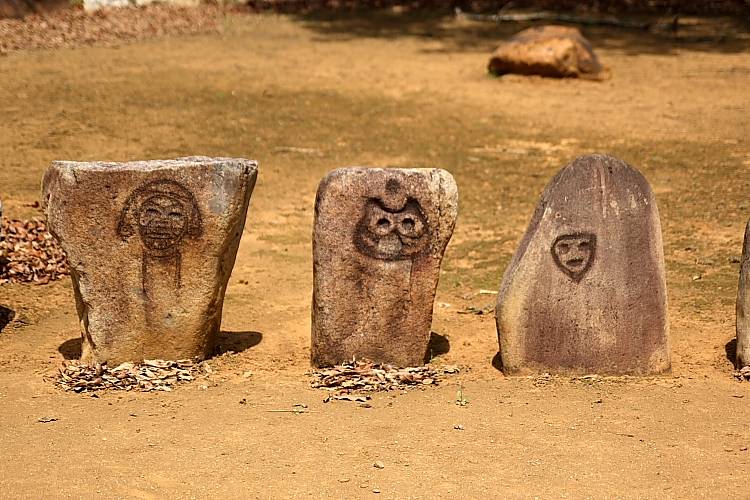
About Caguana Ceremonial Ball Courts Site
The Caguana Ceremonial Ball Courts Site encompasses over 30 acres. It features at least 10 ball courts, which are rectangular stone-lined areas where the Taíno played batey. The courts vary in size, with the largest being over 100 feet long. The site also includes several plazas and ceremonial areas surrounded by stones with carved petroglyphs.
The construction of the ball courts was a meticulous process. The Taíno used local stones and earth to create flat playing surfaces. They lined these with larger stones, some of which were carved with intricate designs. These designs often depicted faces, which are believed to represent deities or ancestral spirits. The plazas served as communal spaces for gatherings and rituals, further emphasizing the site’s social importance.
Architectural highlights of the site include the batey courts and the monoliths. The monoliths are large stone slabs with petroglyphs. They are thought to have played a role in the ceremonial aspects of the site. The careful placement of these stones suggests a deep understanding of the landscape and its spiritual significance. The petroglyphs themselves are a form of artistic expression. They provide insight into the Taíno’s worldview and religious iconography.
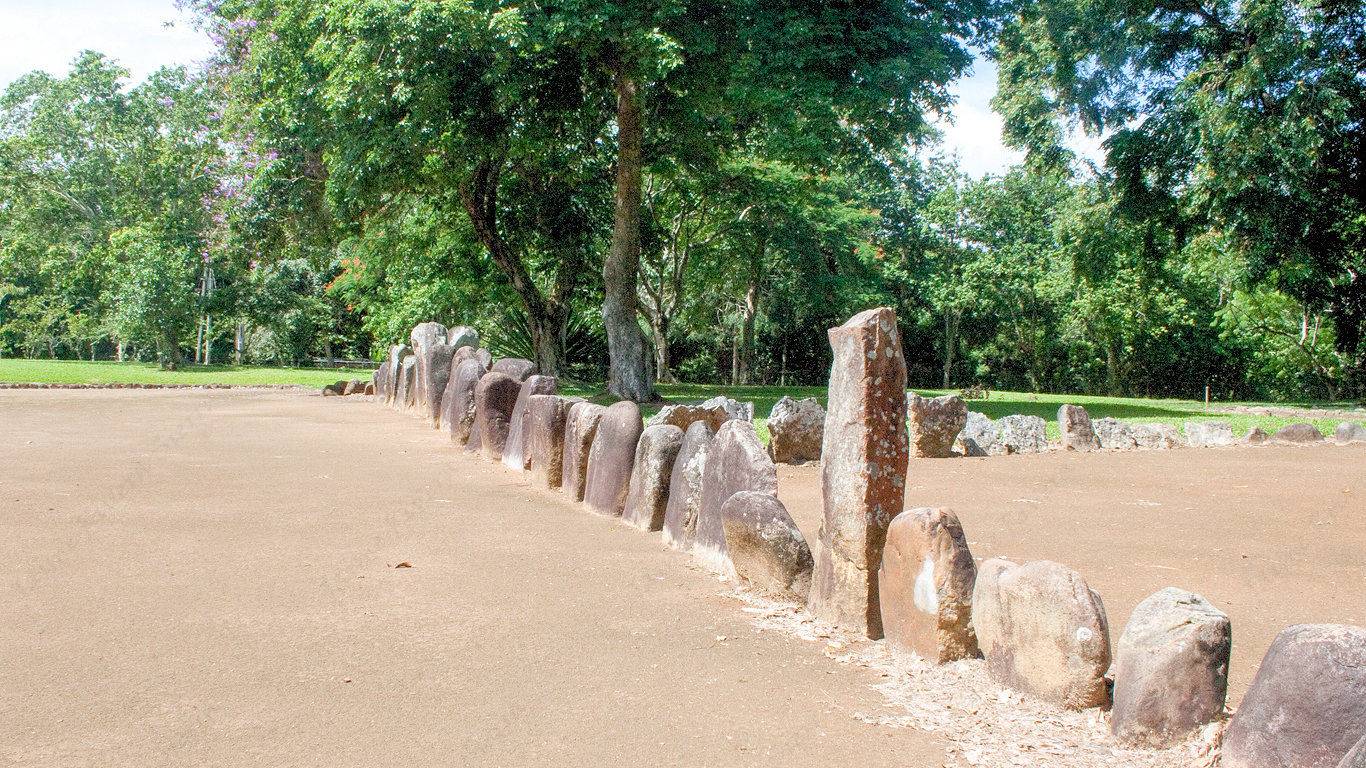
The building materials used at Caguana were primarily locally sourced stones. These were shaped and positioned without the use of mortar. This dry stone technique has allowed the structures to withstand the test of time. The preservation of the site offers a rare opportunity to study the construction methods of the Taíno. It also allows for a deeper appreciation of their craftsmanship and aesthetic sensibilities.
The Caguana Ceremonial Ball Courts Site is not only an archaeological wonder but also a place of natural beauty. The lush surroundings and the site’s integration into the landscape reflect the Taíno’s connection to the earth. The preservation efforts have ensured that the site remains a place where the past resonates with the present. It allows visitors to step back in time and experience the legacy of the Taíno people.
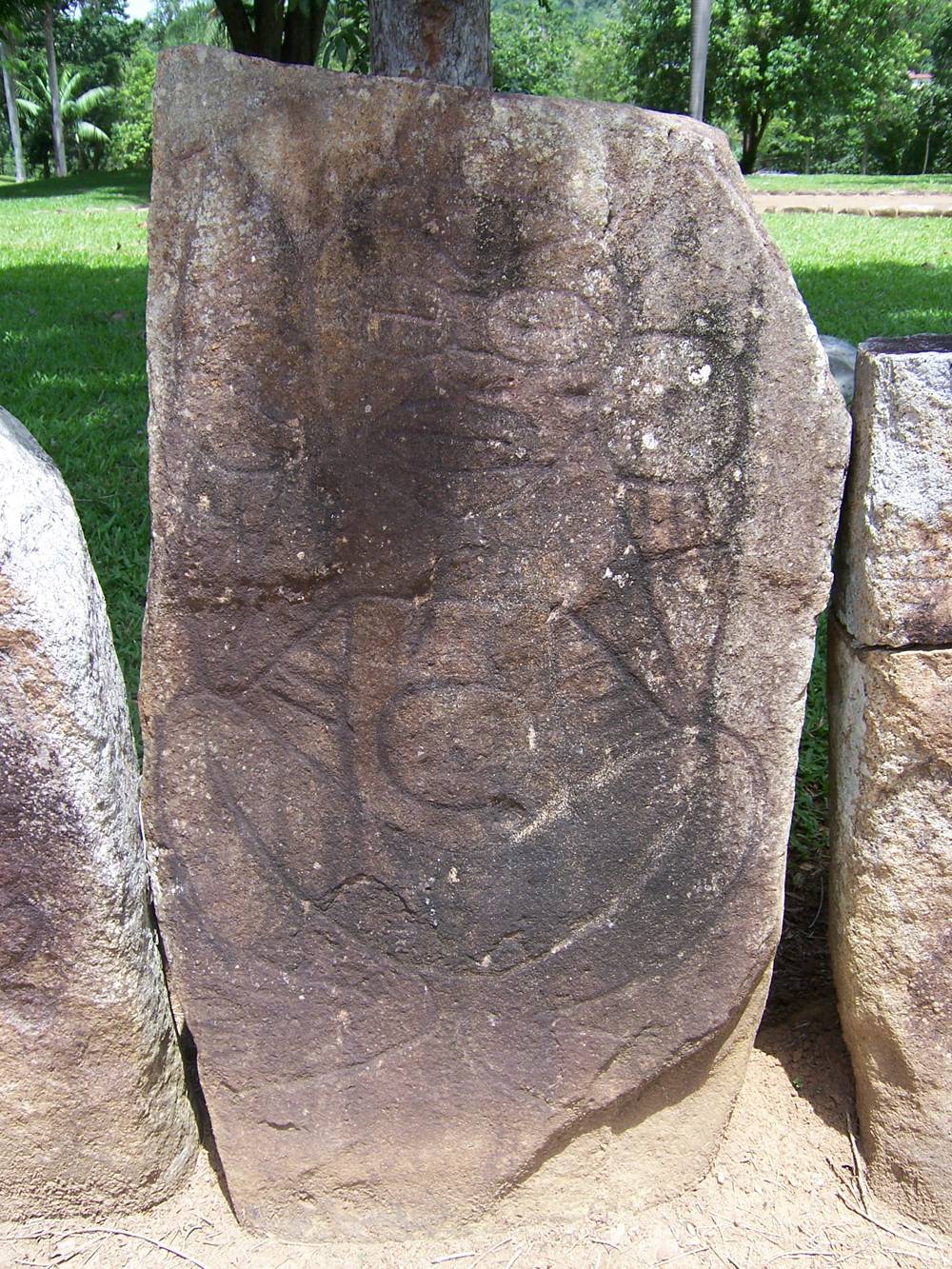
Theories and Interpretations
Several theories surround the Caguana Ceremonial Ball Courts Site, particularly regarding its use and significance. The primary theory is that the site was a major ceremonial center for the Taíno. It was used for playing batey, a ball game with deep religious and social implications. The game may have symbolized the struggle between opposing forces, such as life and death or day and night.
Some mysteries persist about the site, especially concerning the meanings of the petroglyphs. Researchers have proposed that these carvings represent Taíno deities or ancestral spirits. However, the exact interpretations of the symbols remain a topic of debate. The petroglyphs could also be records of astronomical observations or significant events.
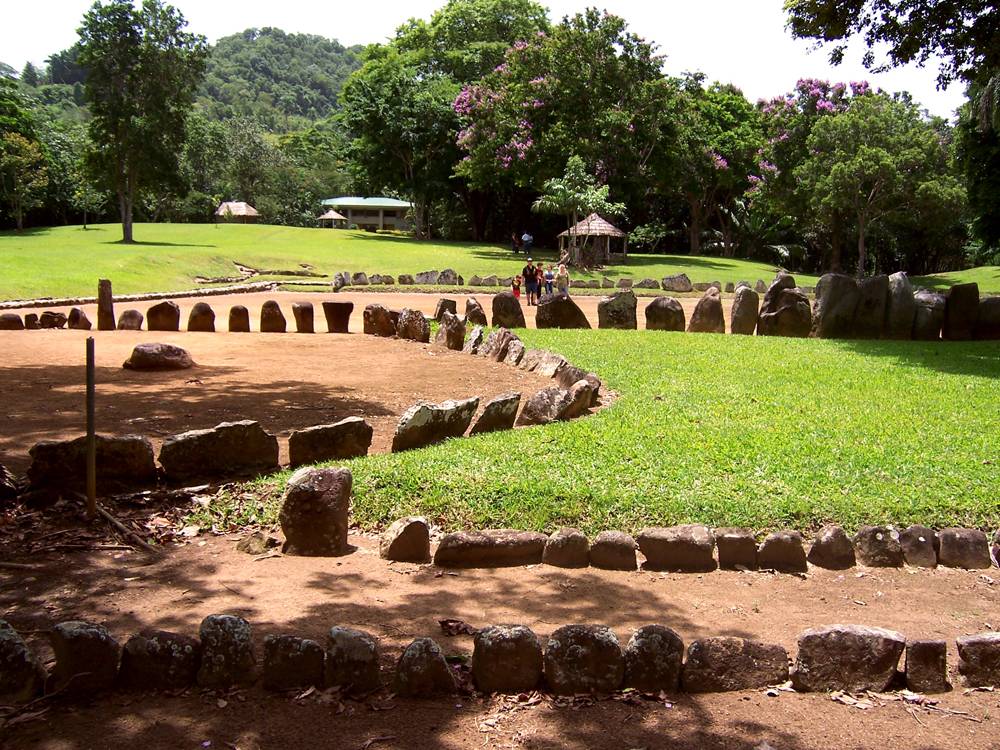
Matching the site to historical records is challenging. The Taíno did not have a written language as we understand it today. Therefore, much of what is known comes from archaeological evidence and early Spanish accounts. These accounts provide some context but are often biased or incomplete. Archaeologists must interpret the site’s features and artifacts to piece together its history.
Dating the site has been carried out using various methods, including radiocarbon dating. This has helped establish a timeline for the site’s construction and use. The dating suggests that the site was most active between 1200 and 1500 AD. This was just before the arrival of the Spanish in the Caribbean.
The interpretations of Caguana continue to evolve as new discoveries are made. The site is a focal point for understanding Taíno culture and its influence in the Caribbean. Ongoing research and analysis are crucial for uncovering the nuances of this important archaeological site.
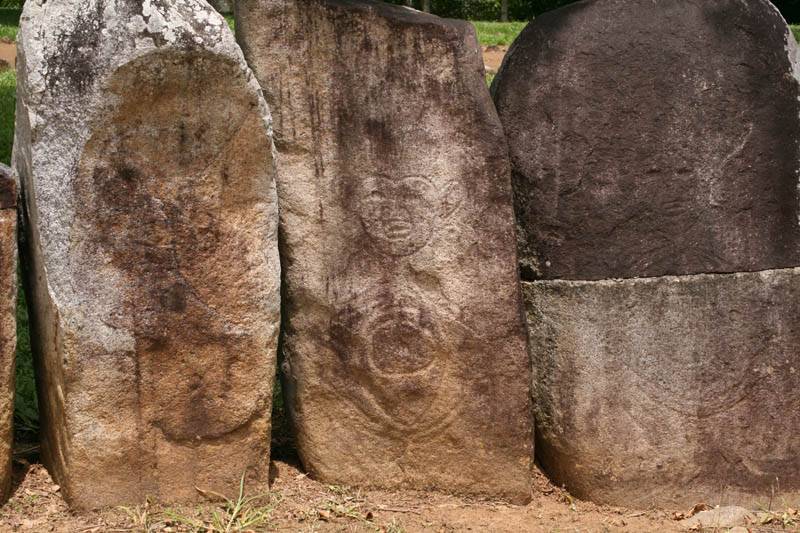
At a glance
Country: Puerto Rico
Civilization: The Taíno
Age: Approximately 1270 AD – 1500 AD
Conclusion and Sources
Reputable sources used in creating this article:
- Wikipedia: https://en.wikipedia.org/wiki/Caguana_Ceremonial_Ball_Courts_Site
- Encyclopedia Britannica: https://www.britannica.com/topic/Taino

